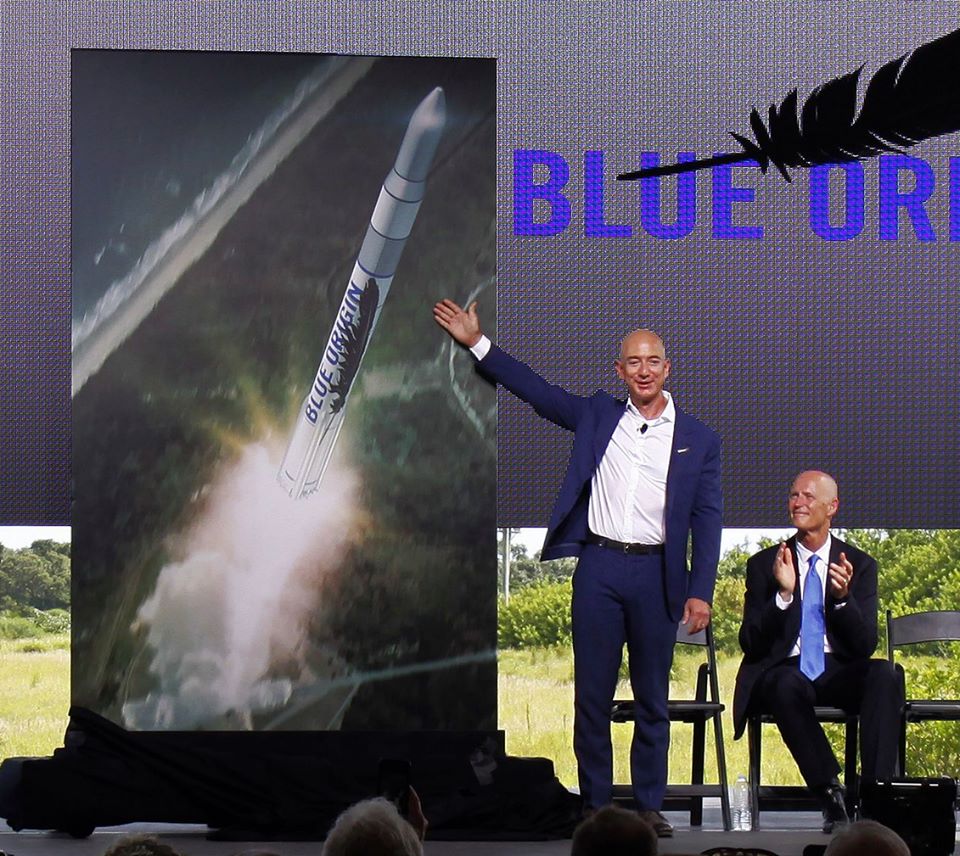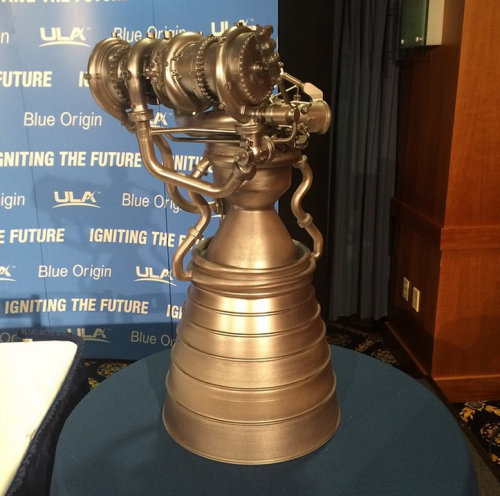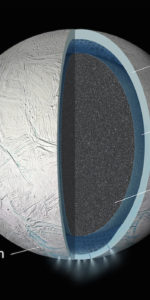
SpaceX will no longer be the only billionaire entrepreneur-owned commercial company contracted with NASA to fly from Cape Canaveral and call it home anymore, as this afternoon Blue Origin and company leader Jeff Bezos announced plans to not only resurrect dormant Launch Complex-36 (LC-36) to fly their rockets from, but also revealed plans to test their BE-4 engines and build their rockets nearby, bringing over 300 new full-time jobs to the local economy in the process.
“Cape Canaveral has long been a gateway to humankind’s greatest adventures. As a kid, I was inspired by the giant Saturn V missions that roared to life from these shores,” said Bezos. “Now we are thrilled to be coming to the Sunshine State for a new era of exploration. Residents of the Space Coast have enjoyed front-row seats to the future for nearly 60 years. Our team’s passion for pioneering is the perfect fit for a community dedicated to forging new frontiers.”

Blue Origin plans to spend $200 million to make their vision a reality on the Cape, including investing in a new production facility to manufacture their reusable fleet of rockets and ready them for flights over and over; basically what competitor Elon Musk and SpaceX wants to do with their Falcon-9.
The $200 million will also help resurrect historic LC-36, which launched 145 missions to space over 43 years (including NASA’s Mariner flights and Pioneer-10 and 11). The last space launch from LC-36 was in 2005, which saw the classified payload/mission NROL-23 launch on the last of Lockheed Martin’s Atlas 3 rockets.
“The pad has stood silent for more than 10 years – too long. We can’t wait to fix that,” said Bezos.
Both SpaceX and ULA have to transport their rockets to Florida for processing to launch and integration with payload or spacecraft, same in California when either company needs to use Vandenberg AFB (although that’s not a far drive for SpaceX since their headquarters is in southern California). By having manufacture, assembly, and launch facilities in the same place, Blue Origin won’t have that problem.
Bezos has not said when construction will begin, only stating that ground will break “soon.”
Cape Canaveral and Florida already lost in Elon Musk’s search for a dedicated commercial spaceport last year, as SpaceX chose south Texas for their commercial launch facility instead. Bezos and Blue Origin selected Florida and the Cape from five other states with potential launch sites to use, but in the end Bezos chose Florida for its location and amount of talent and skills specific to spaceflight that exist on the Space Coast.
“There were pluses and minuses to all of the options,” said Bezos. “Florida, in our opinion, was the best choice.”
The company’s BE-4 engine, which will power ULA’s new Vulcan rocket in the coming years, will also be acceptance tested on the Cape, eventually powering Blue Origin’s own rocket uphill later this decade. Little is known about the company’s new rocket, with Bezos only stating that it will have a reusable first stage that will fly back to Earth for a vertical landing same as the SpaceX Falcon-9 (which has not yet successfully done so, but has come very close more than once).
The rocket’s upper stage, which would be powered by the company’s BE-3 hydrogen engine, would be one-time use—expendable, as is currently the case with both SpaceX Falcon-9 and ULA Atlas-V and Delta-IV rockets.
Details on the rocket will be revealed in 2016, says Bezos.
“Keep watching,” says Bezos.
VIDEO: Blue Origin Unveils Plans For Cape Canaveral LC-36 Launch Site And Rocket Factory
Be sure to “Like” AmericaSpace on Facebook and follow us on Twitter: @AmericaSpace





Floridian space cadets and lots of other space folks probably loved the comment by Blue Origin’s Jeff Bezos: “Now we are thrilled to be coming to the Sunshine State for a new era of exploration.”
Blue Origin’s BE-3 hydrogen/LOX engine and its BE-4 methane/LOX engine have lots of interesting potential uses.
Sometimes a launcher, or even two or three different types of launchers, may experience a launch failure that grounds it for several months or even longer. Or a launcher and launch site might become fully booked for an overly long period of time.
Wonder if Blue Origin might be planning to eventually have an alternate launcher for Boeing’s CST-100 Starliner. Two or three or four alternative launchers for the Starliner would add a useful and valuable capacity of dissimilar redundant LEO access to the CST-100.
Alternative launch vehicles and launch sites that can flexibly and relatively quickly accommodate an ‘Earth stranded’ spacecraft in need of a lift uphill to LEO will be useful for increasing the safety and capabilities of private space stations, the ISS, and robotic and human bases on the Moon.
I was hoping Bezos would have larger Phil Bono type designs–like scaled up New Shepards